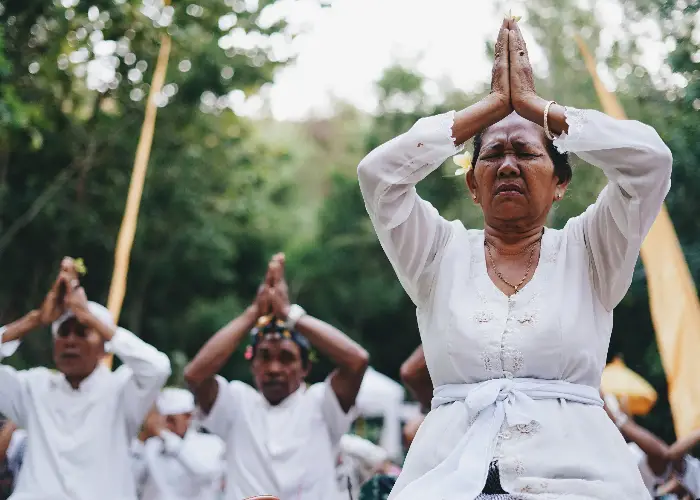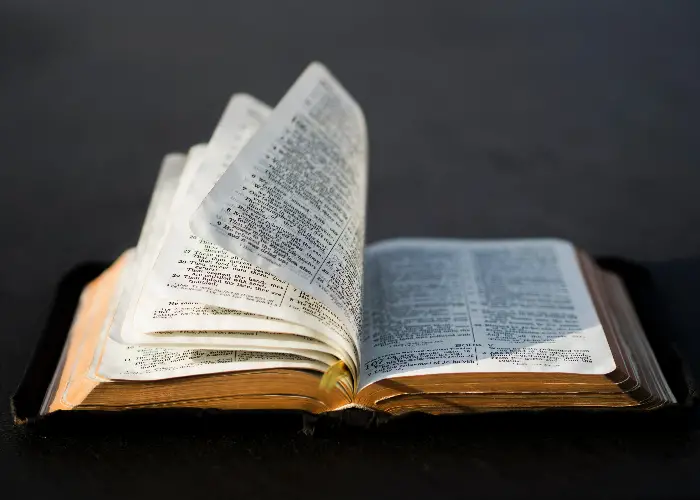Introduction: The Spiritual Pedestal of Feng Shui
Have you ever stepped into a space that immediately relaxed you? Where the layout, aesthetics, and energy contentedly whispered to your very soul? That’s the magic of Feng Shui. This ancient Chinese art can bring harmony, balance or drama to any surrounding. But did you know its roots are intertwined with spiritual traditions?
Feng Shui is more than just moving your furniture or using specific colors; it’s about creating balance and encouraging positive energy flow in your environment. And this isn’t some new-age mysticism – we’re talking about a practice steeped in over 3000 years of history and religious evolution.
Imagine this – ancient China, where monks pondered on ways to better align their living spaces with nature for spiritual upliftment. This inquiry laid the foundation for what we know as Feng Shui today – a testament that every choice in our surroundings has resonance beyond mere aesthetics.
Curious? Welcome aboard! Let us embark on an enlightening journey exploring the intricate connection between Feng Shui and religion.
Examining Feng Shui’s Roots in Ancient China
Tracing back to the Zhou Dynasty over two millennia ago, we find the inception of Feng Shui rooted deeply in the cultural and spiritual soil of Ancient China. Inspired by astronomy, this philosophical system exploded on to mainland China as a way to harmonize individuals with their surrounding environment—known as Qi—a concept closely tied with ancient Chinese religious beliefs.
Astronomical instruments like the gnomon, square foot and compass (Luopan) were paramount to early Feng Shui practitioners— geomancers. With these tools, they auspiciously arranged imperial palaces and burial grounds according to celestial patterns for cosmic harmony.
The fluctuating ideals of Yin and Yang are another cardinal pillar from ancient traditions that permeate Feng Shui. This Taoist concept galvanizes balance between opposing forces–be it light-dark, male-female or positive-negative—thus cultivating equilibrium in one’s life.
Moreover, during Han dynasty (206 BC – 220 AD), ‘Kaogong ji’ surfaced—an architectural blueprint citing chief principles of layout designs concerning dwellings and cities using incipient Feng Shui practices. These doctrines were deeply enmeshed with prevailing philosophical currents at that time – Confucianism and Taoism—influencing its outlook towards ‘Qi’ or vital energy force among others.
Ancient China laid a fertile groundwork for initial understanding of how manicuring our environments impacts various aspects of day-to-day life—a premise holding immense meaning even today.

Feng Shui and Taoism: A Harmonious Connection
As we delve deeper into Feng Shui’s religious orientations, one cannot overlook its profound link with Taoism. Taoism, a philosophy rooted in living in harmony with the “Tao” or “the way,” shares a symbiotic relationship with Feng Shui. The principles of Yin and Yang, as well as the belief in natural and cosmic energy (Qi), are core aspects found both in Feng Shui and Taoistic perspectives.
“Go with the flow” is an aphorism that echoes loudly both through Taoist teachings and Feng Shui practices. It focuses on humans being part of nature’s interconnected web, contemplating seamless adjustments to achieve equilibrium at home or workspaces—a spritely plant here, a harmonious color there or shifting furniture to cleanse energy pathways.
Furthermore, the Bagua—an eight-sided grid used extensively in Feng Shui—is loaded with symbols from I-Ching (“Book of Changes”), an ancient text richly immersed in Taoist ideology. Each side represents various life aspects like wealth, health or career and correlates them to different colors, elements or shapes—offering insights for creating spatial synergies impacting these facets positively.
While contemporary interpretations perceive Feng Shui mostly for aesthetic benefits it presents by beautifying interiors, its roots jut deeper within spiritual dimensions. These crucial influences from Taoism make practising this Chinese geomantic art more meaningful—transmuting your surroundings into veritable sanctuaries fostering tranquility and prosperity.
Feng Shui and Buddhism: Tracing the Influences
Buddhism’s impact on Feng Shui emerged strongly during China’s Tang Dynasty when Buddhist teachings became a cultural fixture. Buddha’s core teachings, such as the Four Noble Truths and the Eightfold Path, have resonances in Feng Shui’s ethic of balance and harmony with our environment.
One striking illustration is the use of Buddhist symbols in Feng Shui practices. The serene face of Buddha or mantra-inscribed prayer wheels are often utilized as energetic tools to elevate spaces – be it residential or commercial—fostering tranquility, awareness, and mindfulness.
Moreover, the concept of ‘sangha’ (community) manifests itself subtly through Feng Shui directives to encourage open areas for social interactions within households – inspired by monastic living customs related to communal harmony.
The incorporation of ceremonial vessels like stūpas or pagodas into various architectural scenarios reflects another deep-seated Buddhist influence within Feng Shui practices. These structures considered sacred due to their association with relics or remains of enlightened beings serve a dual purpose: reinforcing spiritual significance while facilitating better Qi flow due to their rounded shape avoiding sharp corners–a universal design pointer preached by most Feng Shui consultants.
The fusion between these two spiritual giants is a testament not just to religious syncretism but also illustrates how religion-shaped ideological undercurrents continue influencing mundane decisions like arranging your bedside table! To appreciate fully this art form rooted in potent religiosity helps us perceive how ancient wisdom can sculpt modern lives positively.

The Interplay of Feng Shui with Confucianism
Every piece of Feng Shui’s spiritual puzzle wouldn’t be complete without mentioning the influential role of Confucianism. The philosophy propagated by the dominant scholar Confucius centered around respectful social dynamics, meticulous rituals, and harmonious relationships also left an indelible mark on Feng Shui.
Confucian beliefs champion hierarchy and order in society mirrored through Feng Shui principles surrounding spatial hierarchy within residences or workplaces. For instance, placing parents’ bedrooms north (symbolic for respect) or using Feng Shui artifacts like Chinese coins or dragons that signify good fortune while also honoring revered ancestors—articulate this connection subtly.
Another fascinating aspect is how Confucian emphasis on aesthetic beauty finds consonance with Feng Shui’s attraction towards appealing visuals. Balancing visual appeal with energetic harmony is a key principle in “creating” space, not just decorating it—a feat achieved by incorporating colors, shapes, and materials rightly that can resonate Qi energy as well as human aesthetics.
The ritualistic fervor in Confucian tradition also blends seamlessly with prevalent practices involved in applying effective Feng Shui—from decluttering ceremonies to house blessing rituality imbuing sanctity into our quotidian environment beyond tangible benefits.
Whether it’s about respecting your elders or architecting beautiful homes celebrating social connectedness—a deeper understanding of how intertwined these religious orientations are amplifies the essence of practicing this mystical art form. Thoughtfully arranging furniture becomes less an evidence-based practice but a colored mirror reflecting life’s deeper truths—those woven intricately within our cultural tapestry.
Feng Shui in Modern Religious Contexts
As we leap into the modern era, it’s fascinating to witness Feng Shui interfacing with contemporary religious attachments worldwide. This ancient geomantic art has transcended geographical and cultural boundaries advancing a more universal spiritual ideology merging with various world religions.
For instance, in Christian households, Feng Shui principles work in harmony with biblical teachings of peace and well-being. Placement of cross symbol or sacred scriptures might be advised based on specific Bagua zones fostering an amalgamation of archaic Feng Shui knowledge with Christian faith.
Similarly, Islamic teachings advocating cleanliness and orderliness resonate divinely within Feng Shui’s decree for clutter-free environments facilitating better energy movement—a testament to how globally religions echo fundamental principles fostering harmonious living while aligning subtly with this Chinese spatial-arrangement practice.
Buddha statues can coexist peacefully next to crucifixes or minarets as part of personalized altar spaces—affirming religious diversity within the unity of shared human aspiration for balance, peace and prosperity Emmanuel by practicing “positive space” techniques imbued within Feng Shui guidelines today.
Modern religious contexts have graciously embraced this multicultural aspect—the spirituality inherent in ordinary things around us—a profound testament that religion is less about dogma but more about nourishing our lives devolved into mundane routines—an approach where ancients seem wiser teaching us how every nook around us cradles divine potential if treated right!

Conclusion: Feng Shui Beyond Religion
Digging deep into the religious roots of Feng Shui has unearthed a treasure trove of fascinating correlations with various spiritual philosophies – from Taoism’s cosmic harmony to Buddhist influences, and even Confucian hierarchical constructs. Merging seamlessly with diverse modern religious contexts, its footprint has truly become globally recognizable.
Yet, as we conclude this explorative journey or tale better said—an extraordinary revelation takes center stage—Feng Shui expands beyond mere religion into a universal human desire for peace and balance in our spaces. Its wisdom transcends cultural or geographical boundaries reminding us how interlinked we all are—connected through invisible energy threads spinning our unique life-tales within shared spaces.
Perhaps it’s high time we view Feng Shui not merely for staging homes or promoting business luck but appreciate its ancient wisdom pronouncing the sacredness embedded in our mundane surroundings—a home that nurtures you as you nurture it, an office echoing productivity because it’s loved!
As we go about rearranging furniture or selecting color palettes inspired by newfound knowledge—let us also remember to create love around. Let’s rekindle aspirations for world peace and shared prosperity—that surely is extending Feng Shui beyond religion into realm of being humane embellishing our daily lives profoundly! Dedicate yourself to harmonizing your environment according to these principles; you might be pleasantly surprised at the serenity that unfolds.

Sign up